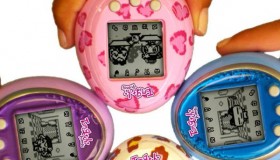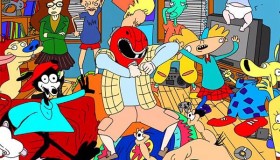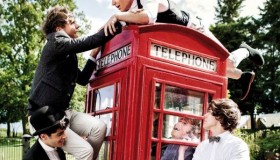Coolest Toys from the Past, Present and Future
Check out our infographic about the last 100 years of toys...

Please take a look at our new infographic, which encapsulates the most popular toys from past, present and beyond.
It has been a fascinating century for children, as innovation has brought about a hundred years’ worth of incredible toys. While kids in the 1920s had to be creative and crafty with their crayons, 21st century children now have robot pets such as Furbies that can talk and interact with them. Being in the business of children’s games, we’ve noticed a few interesting facts about toys and gender over time, and have compiled this information in our latest infographic. You may find that our findings change the way you shop for toys.
It’s no big secret that the toy industry has separated boys and girls into two distinct core markets. Most shops are still organised according to what girls and boys are respectively supposed to like and play with, even though many parents now deliberately avoid choosing stereotypically "girly" or "boyish" toys for their kids. But were toys always so divided? Having studied the most popular toys from the 1920s until now, we can see this was not always the case.
Popular toys at the beginning of the 20th century were, naturally, very different to the toys that were marketed to children during the 1950s until the verge of the millennium. Through our playful study, it became apparent that back in the 1920s and 1930s there wasn’t such an obvious gender gap between toys, and that the most popular toys were equally interesting and relevant to both boys and girls. Our taste in toys has changed from Crayola crayons in the 20s and the Slinky which made little boys and girls smile in 40s and is now coloured in the oh-so-familiar tones of girly pink and boyish blue, which were later applied by marketers to their most popular toys.
As the infographic “The Most Popular Toys from Past to Present and Beyond” created by MyGames4Girls suggests, there is a clear pattern that can be observed regarding the trends of gender-orientated toys versus neutral ones. From the baby boom of the 1950s onwards, the majority of the most popular toys have been specifically targeted at either boys or girls. This marketing trend dwindled in the late 1990s, making more room for toys that are attractive and interesting for both genders. Kids loved the Nintendo GameBoy and now they crave iPods and iPads, plus a host of other electronic toys, online games and apps.
So where will we go from here? We can only imagine what time has in store for future generations of boys and girls: self-glowing paint, real-life morphing suits, jet packs, virtual reality helmets? Trends come and go, but children will always play and we can’t wait to see which toys this century will produce for them - and for us all!
 Best Beauty And The Beast Mobile Cooking Game 99%
Best Beauty And The Beast Mobile Cooking Game 99%  Best Nut Rush Game 99%
Best Nut Rush Game 99%  New Downtown Doodle Fashion 99%
New Downtown Doodle Fashion 99%  New Vegetable Memory Challenge 99%
New Vegetable Memory Challenge 99%







